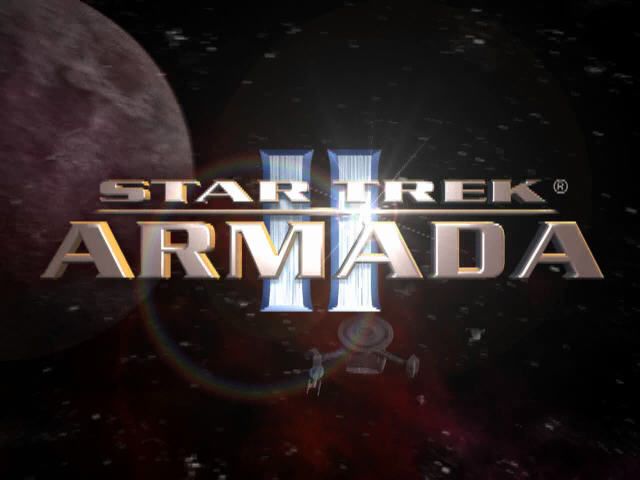Retro Replay Review
Gameplay
Star Trek: Armada II builds on its predecessor’s foundation by delivering a robust real-time strategy experience set in the Alpha Quadrant. Players can choose from six distinct races—Federation, Klingon, Romulan, Cardassian, Borg, and the enigmatic Species 8472—each with a unique playstyle and technology tree. The addition of two new factions, Cardassians and Species 8472, injects fresh strategic depth, forcing veterans to adapt their tactics when facing bio-matter–driven attacks or the Cardassians’ vengeance-fueled tactics.
(HEY YOU!! We hope you enjoy! We try not to run ads. So basically, this is a very expensive hobby running this site. Please consider joining us for updates, forums, and more. Network w/ us to make some cash or friends while retro gaming, and you can win some free retro games for posting. Okay, carry on 👍)
Resource management in Armada II has evolved beyond mere ore collection. Metal is mined from planetary deposits, while latinum nebulae offer a precious secondary resource—except to the Borg, who convert everything into bio-matter. This dual-resource system compels players to balance expansion with protection; colonizing planets accelerates crew recruitment, but it also paints a target on your back. Strategic latinum trading via Ferengi cargo ships or allied players adds an economic diplomacy layer rarely seen in other RTS titles of its era.
The late-game ship upgrade system stands out as a highlight. As battles rage across three tiers of technology, you can retrofit vital systems—shields, engines, and weapons—on-the-fly to counter evolving threats. Combined with the 3D battlefield’s full use of a height axis, Armada II delivers epic clashes where battleships, fighters, and stations peacefully coexist at multiple elevations. Randomly generated skirmish and multiplayer maps provide near-infinite replayability, perfect for friends seeking varied tactical challenges.
Graphics
Considering its early-2000s release, Star Trek: Armada II still holds up visually with polished ship models and detailed surface textures. Each faction’s vessels are instantly recognizable: the sleek Federation cruisers, the aggressive jagged edges of Klingon Birds-of-Prey, and the eerie biomechanical curves of Borg cubes. Particle effects for phaser blasts, torpedo trails, and Omega particle detonations remain visually satisfying, lending weight to every blast and strike.
The game’s use of a 3D engine with full height-level movement allows for spectacular camera pans above asteroid fields, planetary surfaces, and nebulae corridors. Stations can be constructed on different elevations, creating chokepoints and multi-layered defenses that look as good as they play. While some textures appear dated by modern standards, the color-rich nebula backdrops and dynamic lighting evoke the vastness of space and the tension of large-scale skirmishes.
Animations for boarding actions, cloning facilities, and warp jumps are handled with care, giving each special weapon or ability a distinct visual signature. Species 8472’s bio-matter harvesters pulsate with an organic glow, and Cardassian plasma torpedoes leave scorched craters on desert worlds. Frequent camera zooms and cinematic sequences during critical story events further enhance immersion, proving that Armada II’s graphics were ahead of their time in delivering narrative flair.
Story
Set six months after the Omega particle disaster, Armada II picks up the narrative threads left dangling in the original game. The Borg have unexpectedly endured the explosion’s devastating energy wave and are now proliferating across the Alpha Quadrant once more. Their relentless expansion poses an existential threat to the United Federation of Planets, the Klingon Empire, and the Cardassian Union alike, establishing high stakes from the outset.
The single-player campaign is divided into three focused arcs—Federation, Klingon, and Borg—each offering unique mission objectives and moral dilemmas. As Captain Picard’s successor, you must replay diplomatic handshakes and covert sabotage while dealing with relentless Borg incursions. Leading the Klingons, you taste the thrill of honorable conquest, balancing glory in battle against political intrigue at home. The Borg campaign, by contrast, immerses you in assimilation drives that feel both powerful and unsettling.
Though the narrative breadth is narrower than some modern titles, Armada II compensates with tight scripting, memorable cutscenes, and thoughtful integration of classic Star Trek lore. The inclusion of Species 8472 as a playable or enemy faction deepens the plot, showcasing the Transwarp Nexus and the fluid morality of cross-species alliances. Every campaign conclusion leaves you questioning the price of victory—whether it’s innocent lives, federation unity, or the very essence of one’s culture.
Overall Experience
Star Trek: Armada II remains a shining example of how to expand a beloved franchise in the RTS genre. Its blend of resource management, faction diversity, and 3D strategic depth creates a gameplay loop that is both accessible to newcomers and challenging for veterans. The learning curve is gentle, yet mastering each race’s strengths and countering enemy tactics takes time and skill, ensuring long-term engagement.
The game’s sound design and musical score deserve praise for complementing its space opera grandeur. From the triumphant swell of the Federation theme to the sinister hum of Borg regeneration, audio cues enhance every battle decision. Voice-overs from franchise regulars lend authenticity, and mission briefings keep the narrative momentum rolling between combat sequences.
Despite its age, Armada II’s active modding community and online multiplayer scene continue to breathe life into the title. Custom maps, balance tweaks, and graphical overhauls are readily available, granting modern PCs access to improved resolution and performance. For any fan of Star Trek or strategic space warfare, Armada II offers an engaging, content-rich experience that stands the test of time.
 Retro Replay Retro Replay gaming reviews, news, emulation, geek stuff and more!
Retro Replay Retro Replay gaming reviews, news, emulation, geek stuff and more!









Reviews
There are no reviews yet.